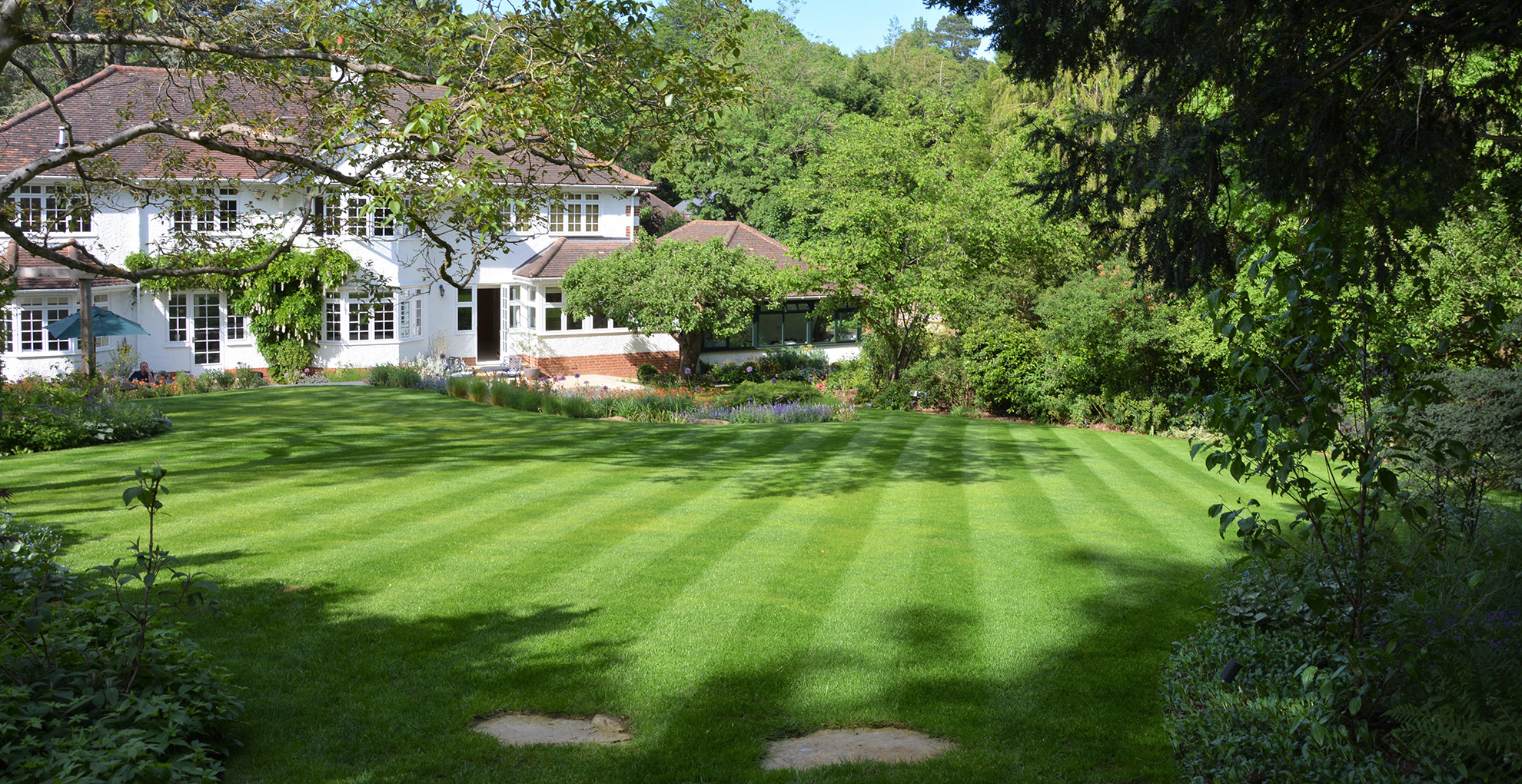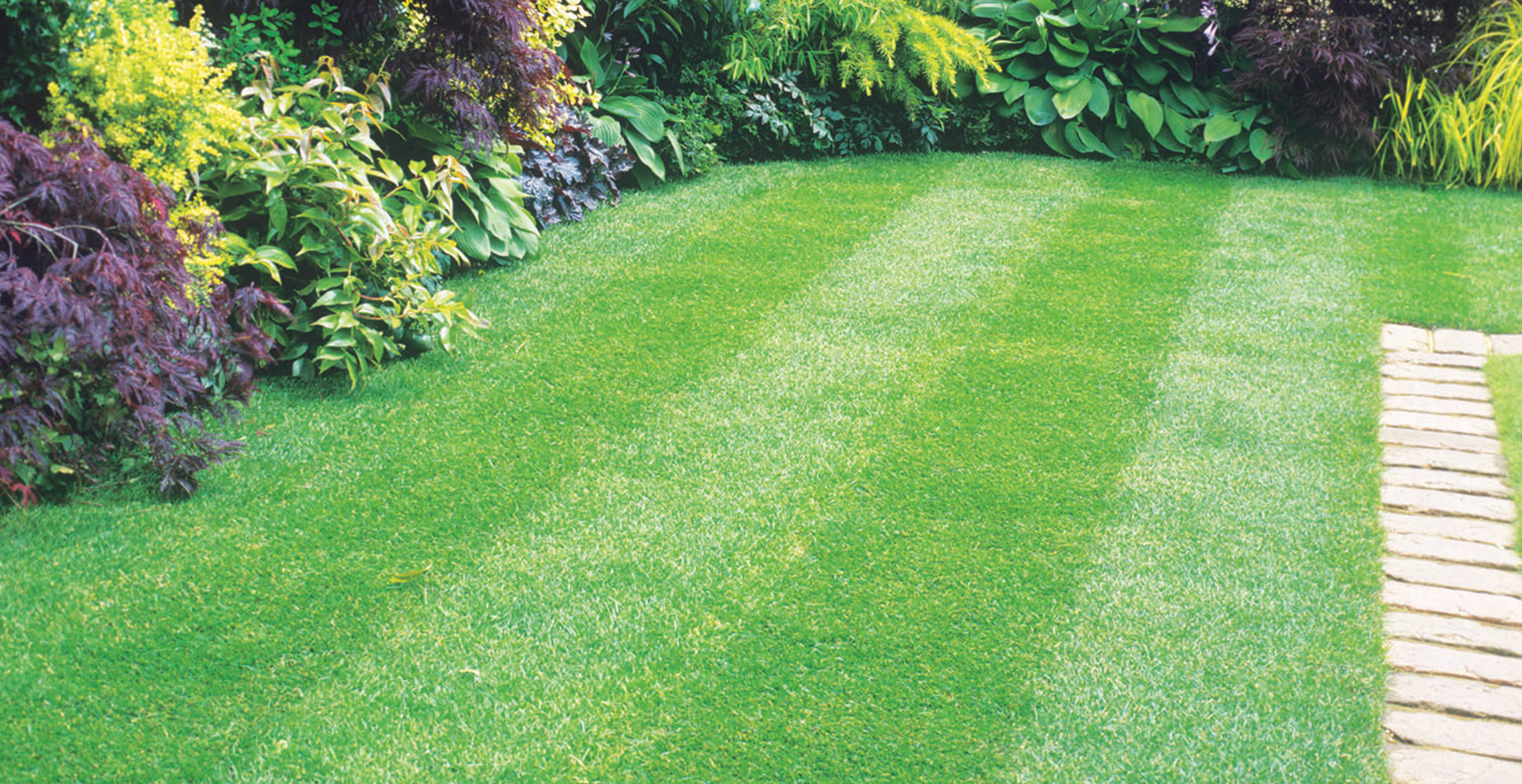How often should you fertilize your lawn? Experts share their advice for impeccable grass
Knowing how often you should fertilize your lawn is key to maintaining happy, healthy grass all year round


You might say lawns are high maintenance when you consider that on top of mowing, aerating, and scarifying the grass also needs to be fertilized. But how often should you fertilize your lawn for the best results? We ask the experts.
It's all about timing, frequency, and climate conditions when it comes to carrying out essential lawn care. So how often you mow the lawn will remain steady but when you first cut grass after winter will change every year. When to scarify grass will differ from when to plant grass seed.
To determine a definitive answer for how often you be aiming to fertilize your lawn we have consulted horticultural experts and lawn care specialists – who are all in agreement. Our lawn specialists also share their advice on when is best to fertilize a lawn and what conditions to carry out the important gardening job.
How often should you fertilize a lawn? Expert opinion on feeding grass...
Fertilizing a lawn is effectively feeding grass, providing it with additional nutrients to help it grow and reach optimum lushness. The act of adding fertilizer to a lawn is the equivalent of giving your best plants a healthy dose of plant food or using a nutrient-dense compost when growing vegetables.
But how much is too much, because you can kill plants with kindness (as anyone who has asked how often to water succulents will be well aware). So you might too be asking yourself how often should I fertilize my lawn?
"Common thought says you should fertilize your lawn 2-4 times a year, with some lawns requiring more or fewer applications," says Jay Betts, a grass expert at lawn care specialist LawnStarter. "However, the truth of the matter is it all depends on what your grass is looking like and what its current pH and nutrient levels are at. You can find test strips at your local hardware store which can help determine these factors but to make things simple I recommend fertilizing your lawn at least 3 times a year."
"With a traditional lawn, it’s a good idea to fertilize the lawn with slow-release fertilizer 2-3 times a year," advises James Scott FSGD, a valued member of the Society of Garden Designers and principal designer at The Garden Company. "Use a low-Nitrogen product in Autumn and early Spring. Use a higher-Nitrogen product during Summer. Too much Nitrogen can disrupt the lawn’s natural growth and development."
Sign up for the woman&home newsletter
Sign up to our free daily email for the latest royal and entertainment news, interesting opinion, expert advice on styling and beauty trends, and no-nonsense guides to the health and wellness questions you want answered.
James adds: "It’s also important to remove dead thatch that may have built up by scarifying the lawn in Autumn and Spring (vigorously pulling a spring-time rake through the grass sward). You can aerate the lawn at the same time and add top dressing. "

Garden designed by James Scott FSGD, at The Garden Company
When is the best time to fertilize your lawn?
There are many factors to consider to ascertain the best time to fertilize a lawn. Firstly the best time, on any given day. "Fertilize your lawn in the morning or early evening, or basically avoid fertilizing during the hottest time of the day as this lead to burning the grass," explains Jay.
"In addition, I would recommend getting your lawn mowed before applying any fertilizer to help the fertilizer seep deeper into the ground. When using granular fertilizers, make sure to water your lawn right after applying the fertilizer and if you are using liquid fertilizer, wait 3-4 hours before watering your lawn to help the soil absorb the nutrients."
But what about at different times of the year? "If you live in a hot climate it’s recommended you fertilize your lawn during early spring, early summer, and early fall, as opposed to early spring, early fall, and late fall for colder climates," advises Jay.
"Whether it is spring, summer, or autumn, your lawns will be eager for food, and while lawns come in different shapes and sizes, they love being fed a diet of high-quality, premium fertilizer," explains Chris McIlroy, a lawn expert at The Grass People "but timing is key."

"The truth is you should apply a fertilizer feeding schedule. It is ideal to follow a schedule for most of the year while avoiding January and February when your lawn is dormant," advises Chris. "One of the best times to use fertilizer is in autumn. The rest of the year is fine for fertilizer use, but we will discuss that in more detail later."
Advising on the ideal overall climate conditions to create the best time to fertilize James explains: "The ground needs to be relatively moist with dry surface conditions for all of all lawn treatments. If you fertilize the lawn and there is no rainfall in the next 24 hours, then it is important to water the area. This washes the fertilizer off the grass and into the soil and also prevents it from burning the grass blades."
When using fertilizers to keep your lawn green and healthy, according to Chris you should know the two main factors to determine when to fertilize your lawn. Here he explains what those are...
1. How the weather impacts when you fertilize
"Your lawn is a fussy grower, and depending on temperatures, the growth rate of your lawn will vary," Chris explains. "Think of your lawn as wanting to hibernate during the frosty winter months, with growth approaching a standstill before coming out well-rested in warmer spring months and speeding back up again."
"We recommend you fertilize your lawn before the temperatures drop at the end of autumn, keeping it healthy and protecting it from frost and winter-borne diseases, and again in spring to protect it from extreme heat and drought during summer. Ideally, you want to fertilize your lawn when you expect a good amount of rain, so it does the job for you – otherwise, water the granules in yourself until they disappear."
2. How seasons impact when you fertilize
Depending on where you live, the temperatures associated with seasonal change could arrive at various times. "So, keep an eye on the weather forecast for the ideal temperatures before you get to work."
- Pre-Season: "Not quite panic stations, but this is the first opportunity to get your lawn in shape for the upcoming season. Once temperatures consistently hit 8-10 degrees, this is the perfect time to fertilize and use a quick-release: spring/summer fertilizer to kickstart the season, providing your lawn with the nutrients it needs with an intensive 6-week feed, adding greenness back to your lawn and preparing it for the upcoming summer."
- First Feed (March - June): "This is where the fun begins with your lawn, as it will be in full growth mode and ready for its next round of fertilizer. Adding a slow release: spring/summer fertilizer will provide your lawn with the complete feed solution for summer in one swift application, giving it the nutrients it needs all summer long, allowing you to relax and admire its beauty."
- Bonus Feed (July - August): "Bonus summer tip: Apply an optional second dose of our nitrogen-rich quick-release: spring/summer fertilizer. Lawn growth is slowing down and summer temperatures place your garden under stress from the heat. If your lawn is starting to look a little yellow from the extra traffic and summer heat, this is the perfect time to apply a quick-release product to help green up your lawn in time for all those summer barbeques."
- Final Feed (September - December): "Summer winds down and so do the temperatures, with the much-needed rain your garden loves returning. This is the perfect time to aerate your lawn, helping your lawn 'breathe' and nutrients to flow more freely, allowing it to absorb its autumn feed. Applying a slow release: Autumn/winter fertilizer provides your lawn with the ultimate protection from winter disease and frost. Elevated levels of potassium within the mix help to harden your grass against the winter cold and preserves the appearance of your lawn until the following spring/summer, meaning you will have a head start on the neighbors and be able to show it off."
Can you put fertilizer on wet grass?
Generally speaking, it is best to avoid carrying out any lawn maintenance when the grass is wet, including mowing and scarifying, because you risk damaging the integrity of the grass. But when it comes to fertilizing the answer is actually yes, you can work with wet grass but it depends on the overall conditions.
"It is actually healthy for the soil to be moist or slightly wet before applying any fertilizer," explains Jay.
"Do read the suggested directions for the fertilizer you buy as some might have different requirements, however, my rule of thumb here is to wait 2-4 days after a day of rain before applying any fertilizer."

Tamara is a highly experienced homes and interiors journalist with a career spanning over 22 years. Now the Lifestyle Editor of womanandhome.com, she previously spent 18 years working with the style teams at Country Homes & Interiors and Ideal Home. With these award-winning interior teams, she gained a wealth of knowledge and honed her skills and passion for styling and writing about every aspect of lifestyle and interiors.
A true homes and interiors expert, Tamara has been an ambassador for leading interior brands on multiple occasions, including appearing on Matalan’s The Show and presenting at top interior trend forecasting events such as the Autumn Fair and Spring Fair.
-
 Unforgettable date ideas to make a great first impression or rekindle romance
Unforgettable date ideas to make a great first impression or rekindle romanceForget the same old first date formula - these unforgettable date ideas will leave them thinking about you long after you go home
By Natalie Denton Published
-
 Butter yellow might be the colour of the season, but Amal Clooney is making me want to try sunshine shades
Butter yellow might be the colour of the season, but Amal Clooney is making me want to try sunshine shadesSpark some joy by adding some statement yellow pieces to your wardrobe just in time for summer
By Matilda Stanley Published